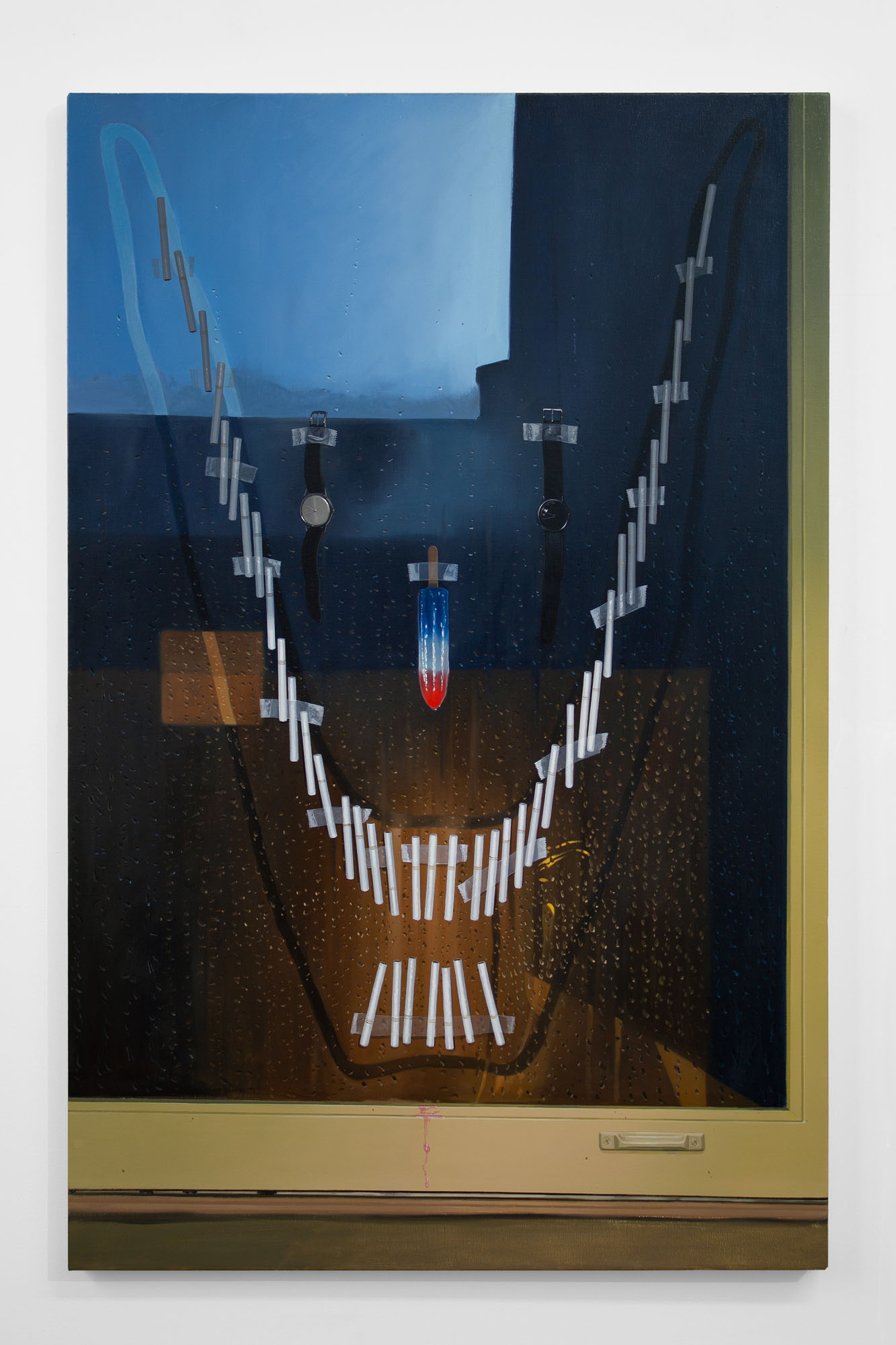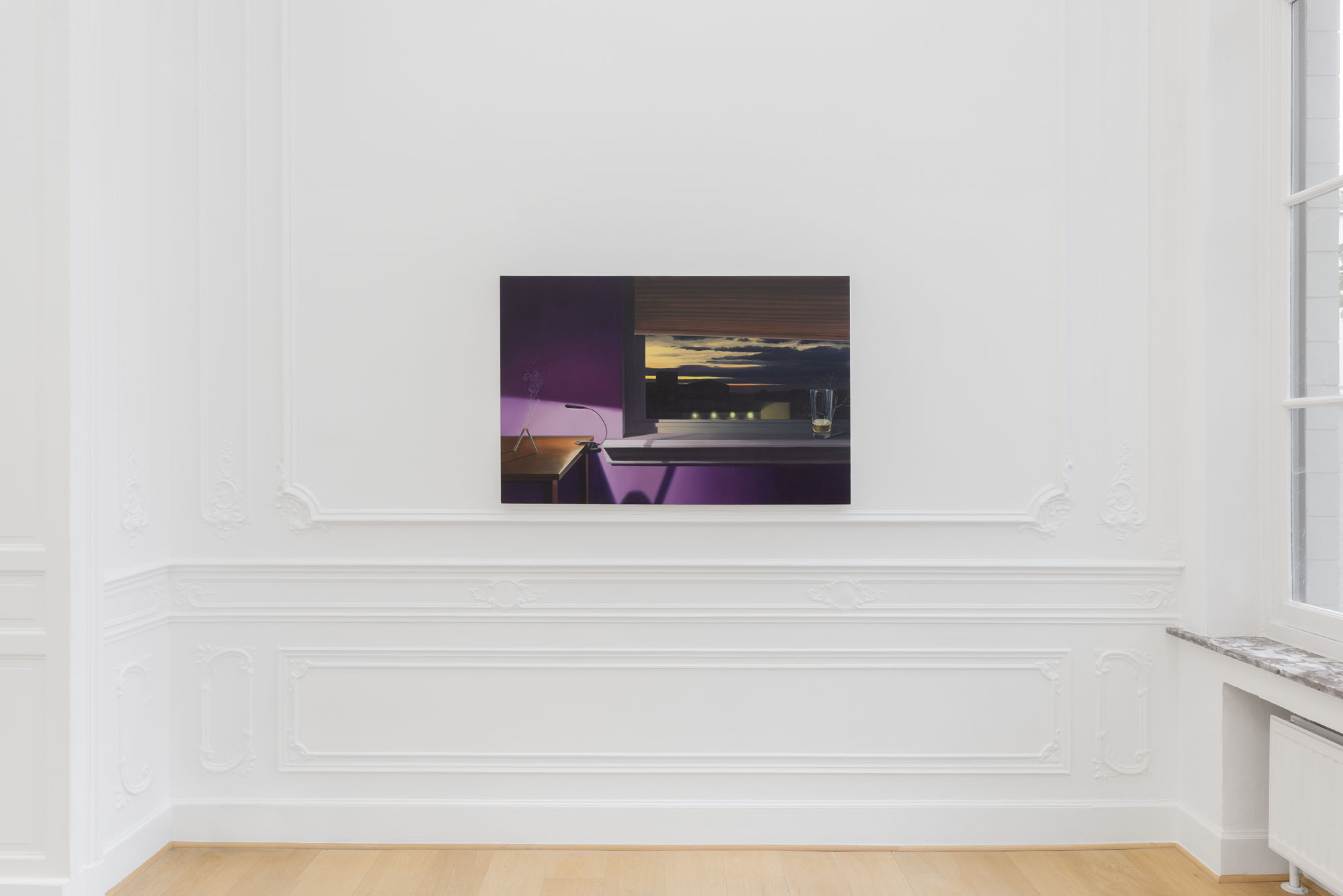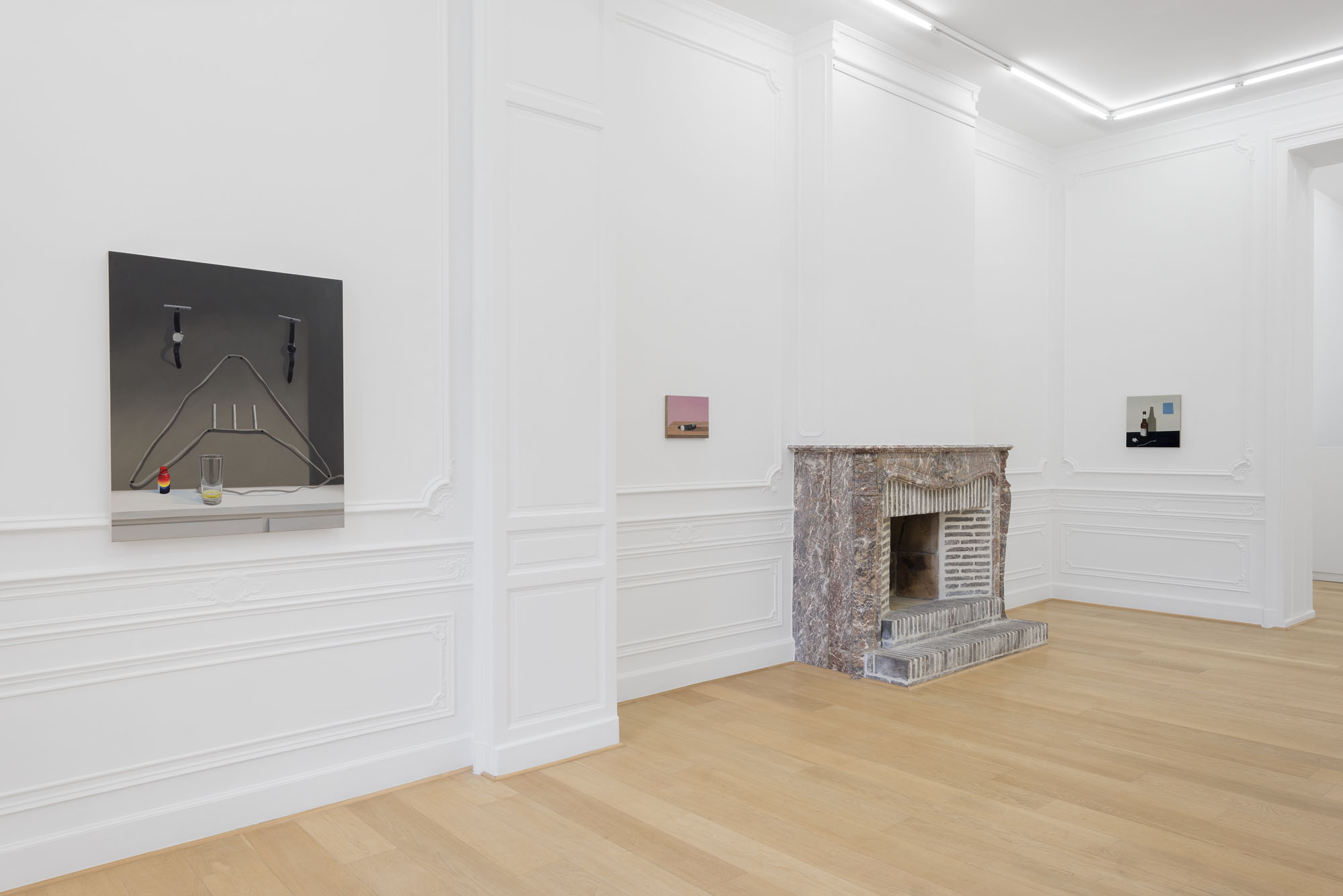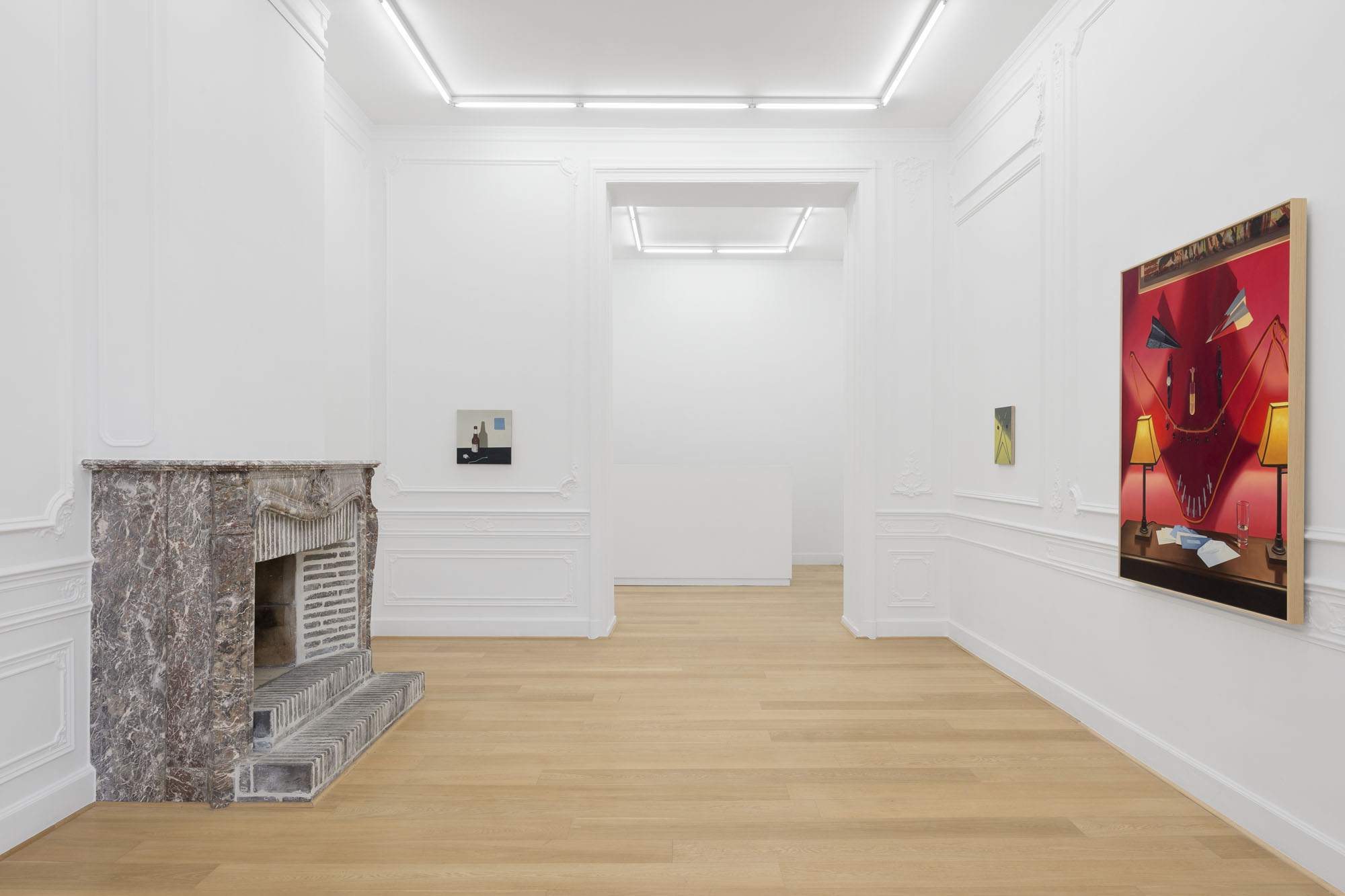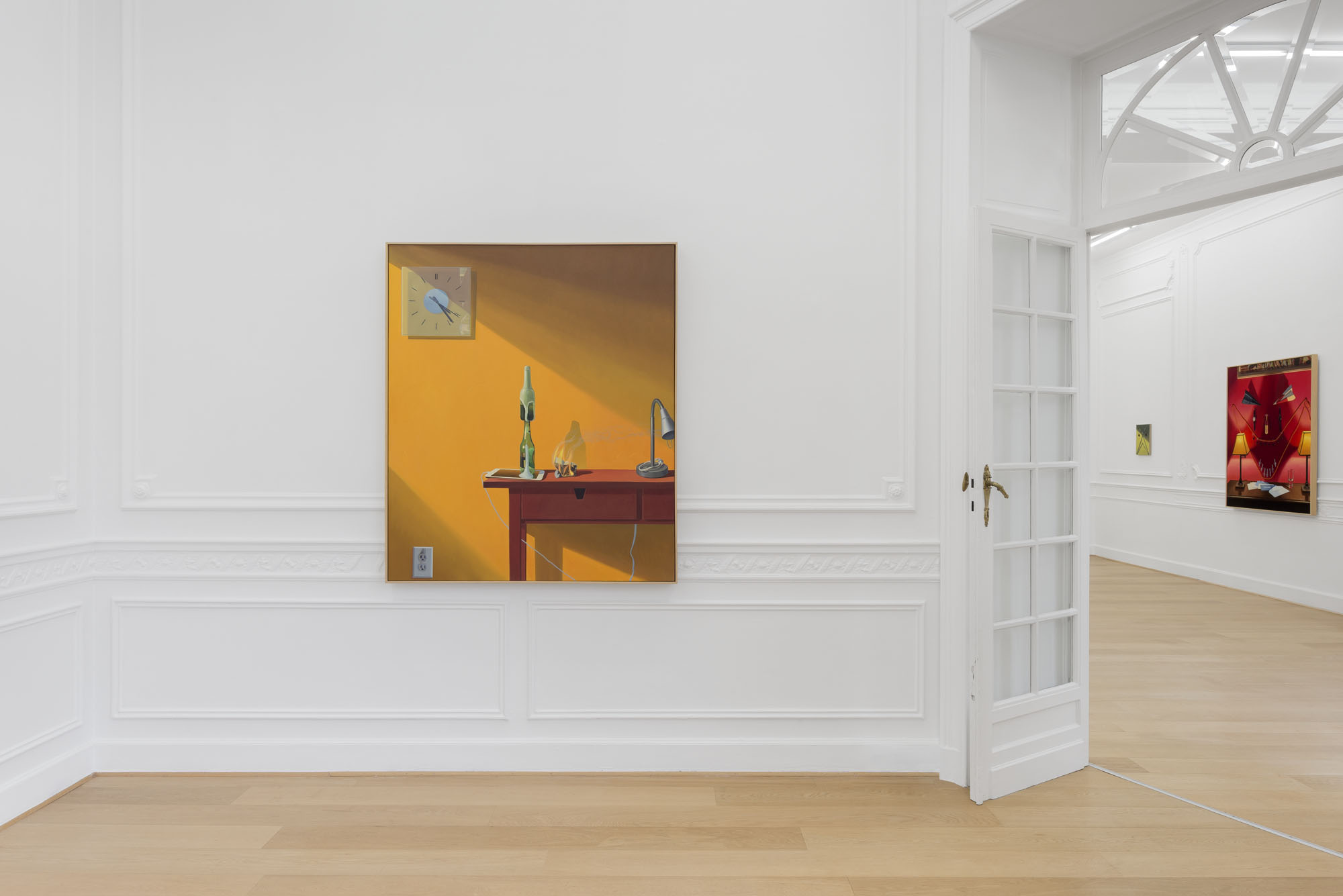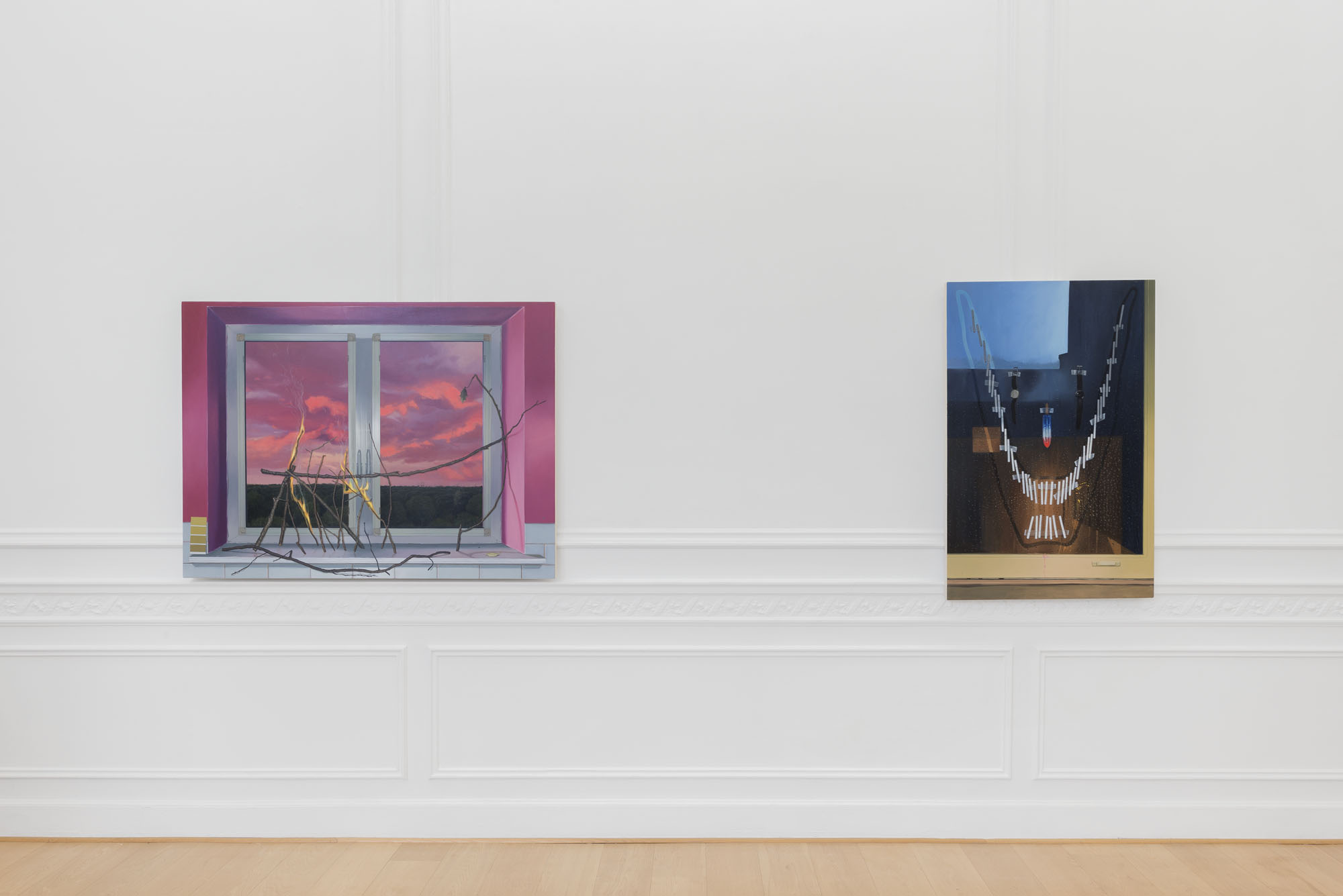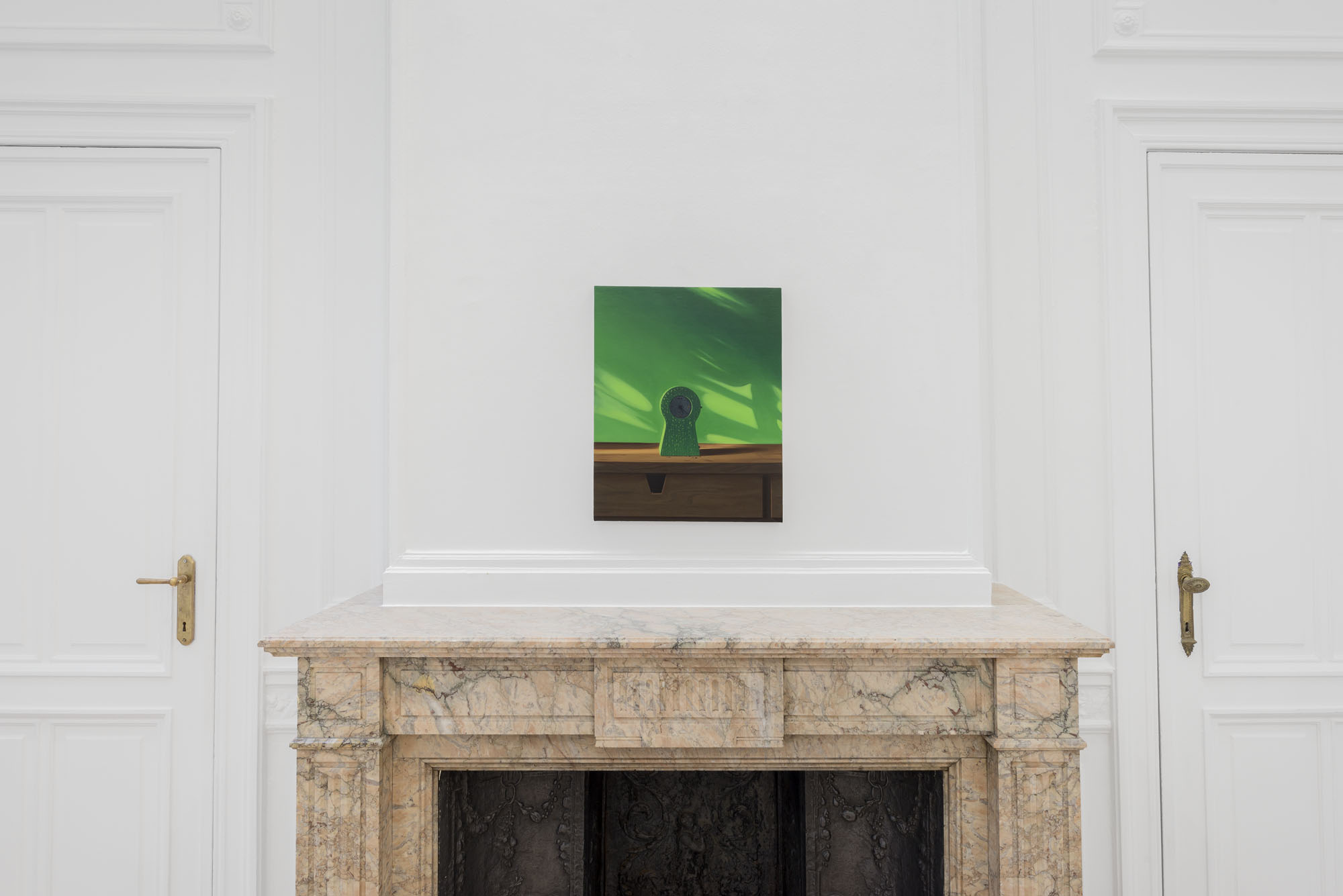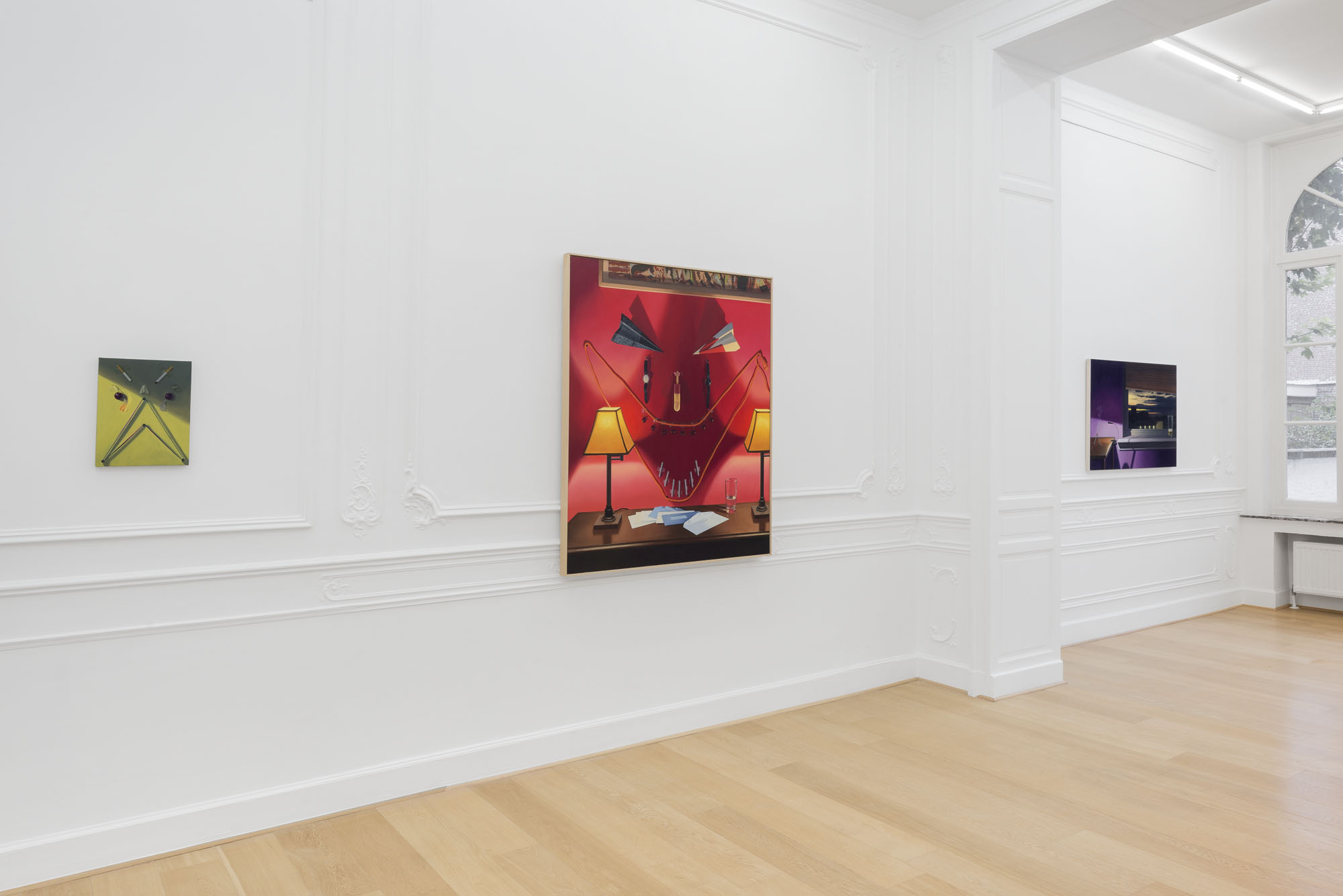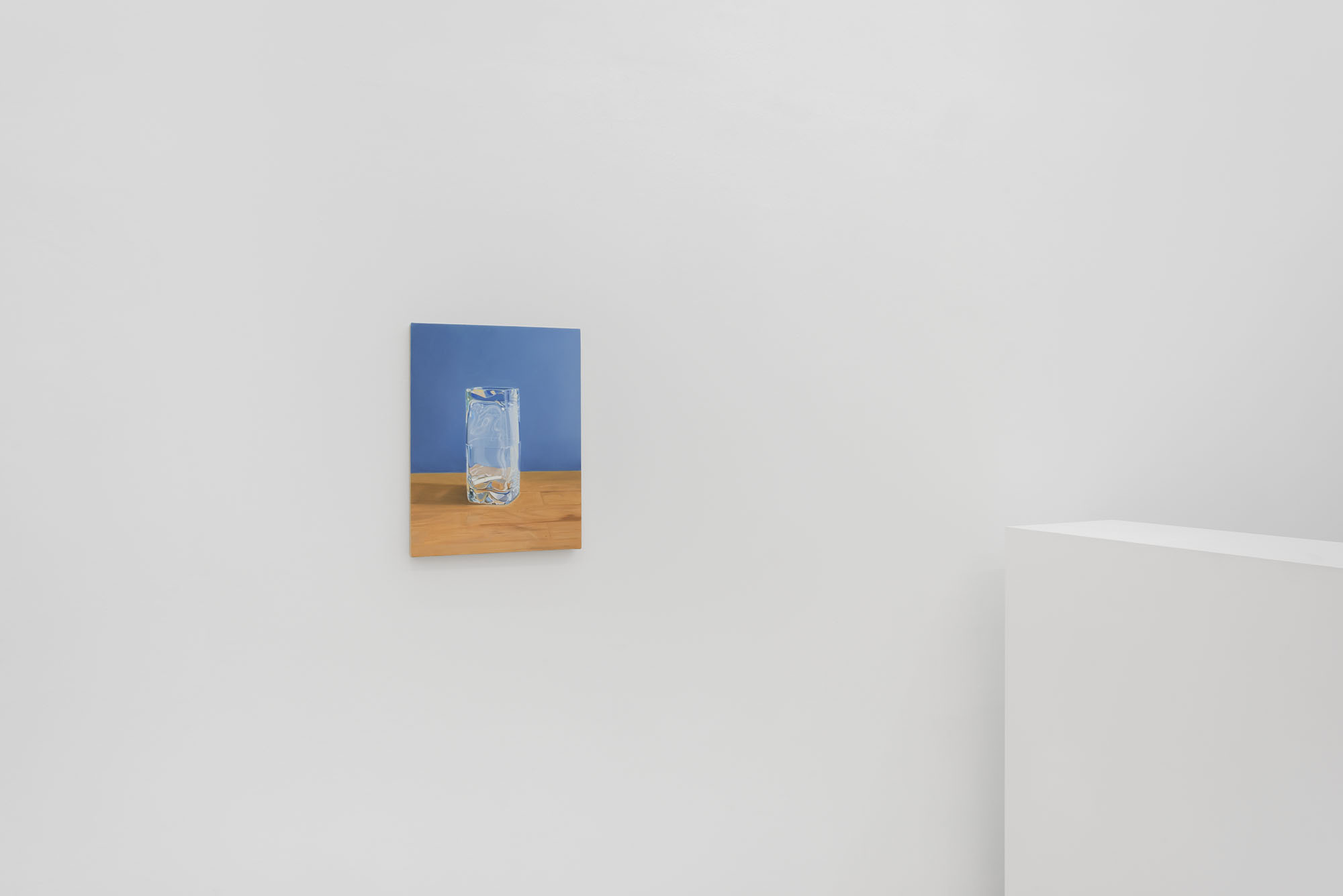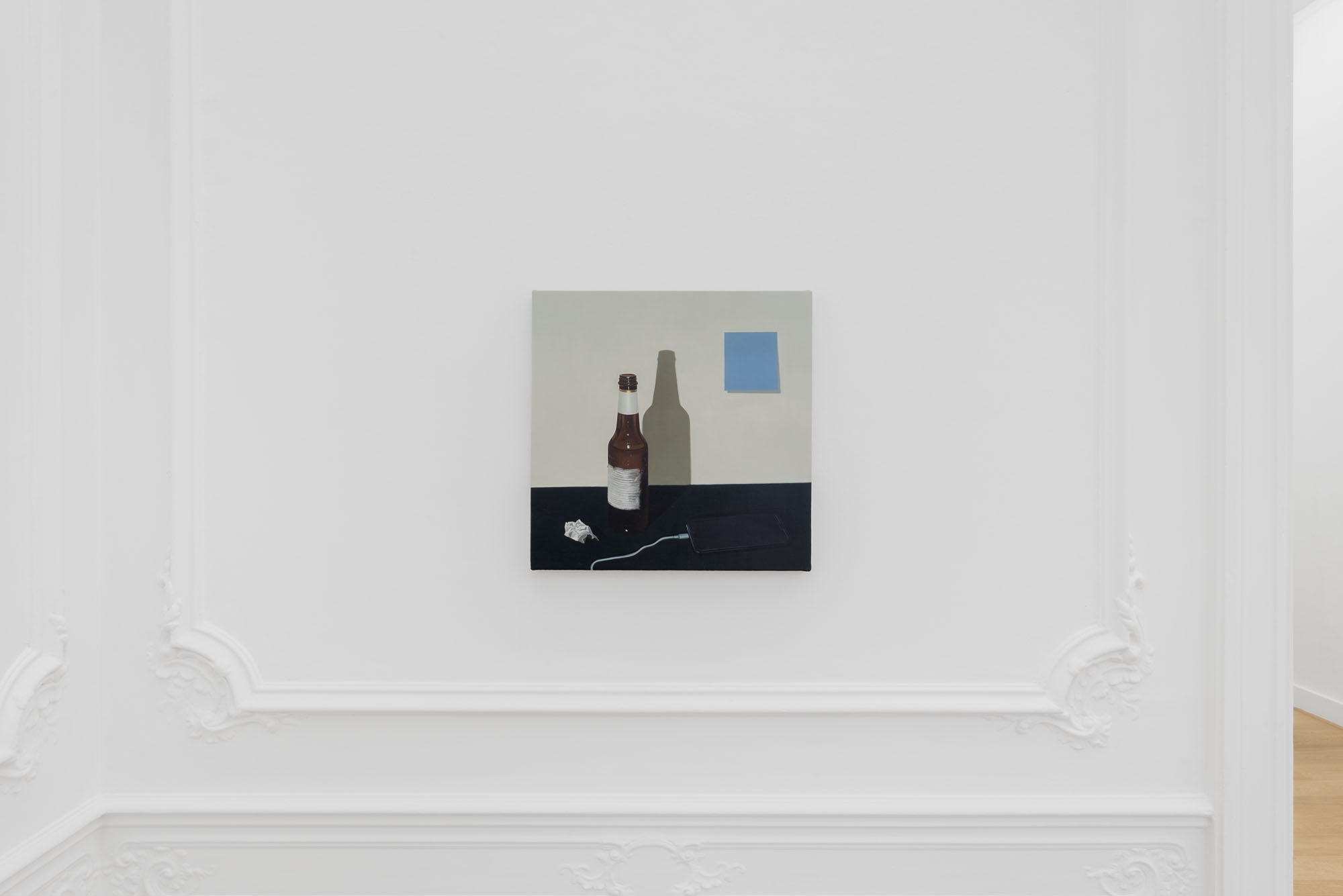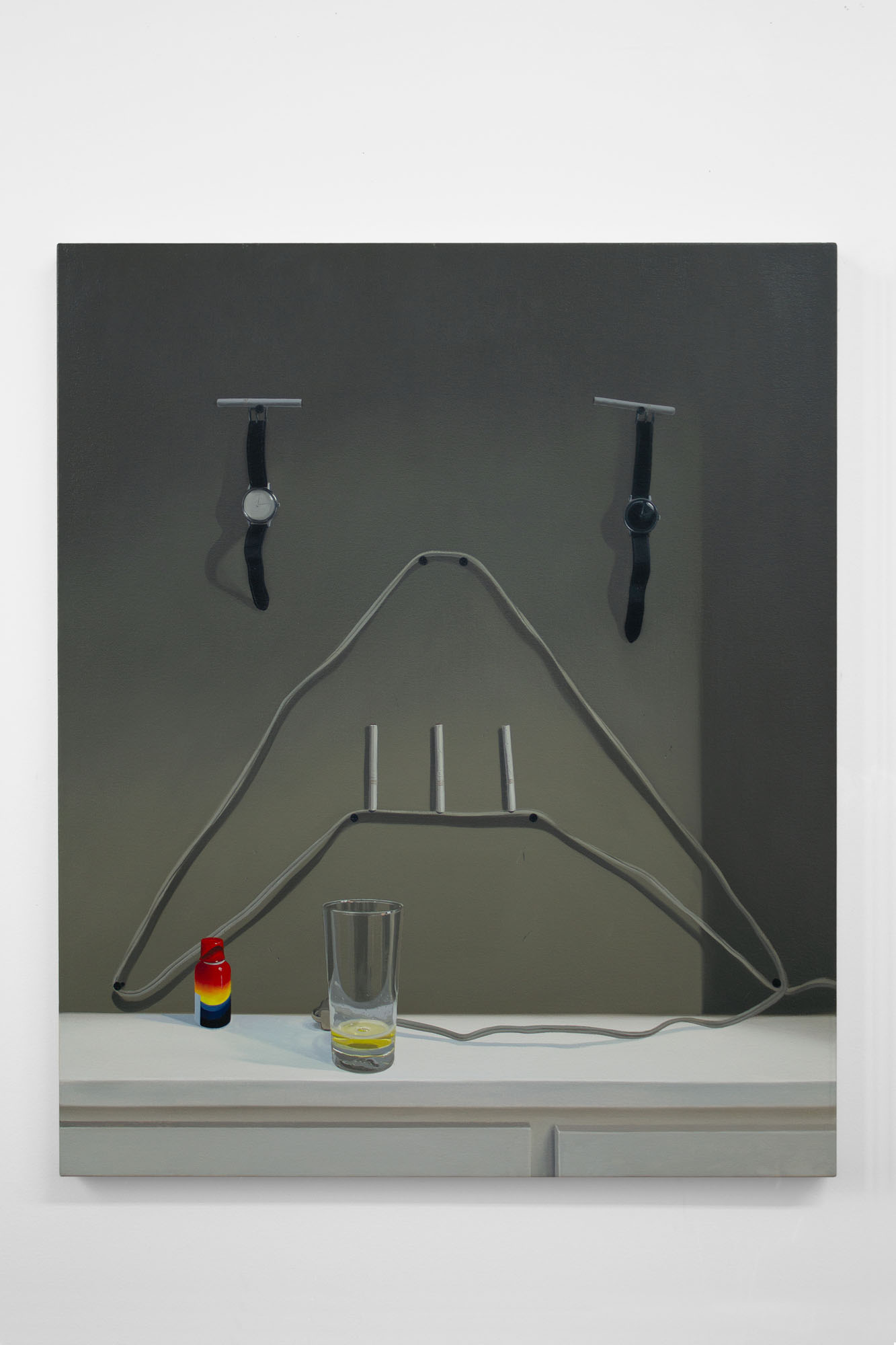Artist: Paul Rouphail
Exhibition title: At Home
Venue: Stems Gallery, Brussels, Belgium
Date: September 5 – October 26, 2019
Photography: all images copyright and courtesy of the artist and Stems Gallery, Brussels
Giorgio Morandi’s paintings have been a favorite topic of art critic and poet Peter Schjeldahl. In his many discussions of Morandi, Schjeldahl has described the Italian’s modest, reductive paintings of bottles and jars as not merely observational images of domestic items, but as attempts to decipher the atmospheric space in which the artist and his subjects are mutually situated. Schjeldahl argues that through the mechanics of capturing ambience through oil paint, Morandi’s medium—like that of the Impressionists—is as demonstrably poetic in material as it is scientific in thought; so much so that the futile task of capturing time through still painting, he says, is enough “to break your heart.”
All romantic assertions to oil painting aside, Schjeldahl’s observations on Morandi are reminiscent of American environmental philosopher John Dewey’s musings on the arts in Art and Experience as “a product…of continuous and cumulative interaction of an organic self with the world.” Through painting we can interpret the nature of present experience as the “dynamically insistent occasion for establishing…the growth of meaning.” [1]
The eleven images I have made for this show are a meditation on Dewey’s proclamation. In reference to Morandi, my images are comprised of domestic objects. In some paintings, beer bottles spontaneously erupt. Kitchen clocks, power cords, wrist watches, smartphones, and various food or domestic items concoct faces, burst into flames, or sit in silence. Each painting realizes a kind of premonition of domestic life—some with equanimity, others with apprehension.
These paintings were also made during the politically and ecologically turbulent year of 2019. My apprehension of the seemingly intractable aesthetic language of contemporary painting has mirrored my own concerns as a citizen. I have attempted to make paintings that document a coevolution between me and my simple subjects: the objects oscillate between personification and abstraction. Like people, they are unique things affected by and situated within the world they inhabit. I occupy a similar position to that of Santu Mofokeng in his series Poisoned Landscapes, in which the artist maintains the uncertain position of “not knowing.” Patricia Hayes elaborates on this condition as “the poetics of being in a problem.” [2]
Along with Morandi, artists such as George Ault, Luigi Ghirri, Thomas Demand, Stephen Shore, among many others, have been important to my understanding of the work for this show—the former two artists for their poetic formalism, and the latter two artists for their examination of political and environmental subjects through aesthetic reinterpretation of photographic empiricism.
An artwork, John Dewey says, “is a construction in time, not an instantaneous emission…It means that the expression of the self in and through a medium, constituting the work of art, is itself a prolonged interaction of something issuing from the self with objective conditions, a process in which both of them acquire a form and order they did not at first possess.” This transformation of the artist and his subjects from the process of diligently looking and recording should be familiar to anyone committed to the practice of painting. It is also an act of recognition in that the understanding gained from this practice is not equivalent to the encounter with something altogether new. The comprehension of the physical world, rather—like Morandi—results from the consistent reckoning with a capability that already exists within oneself.[3]
-Paul Rouphail
[1] Neil W. Browne, The World in Which we Occur. John Dewey: Pragmatist Ecology, andAmerica Ecological Writing of the Twentieth Century (Tuscaloosa: University of Alabama Press, 2017), p.12-13.
[2] Patricia Hayes, “Polluted Landscapes.” Chasing Shadows. Santu Mofokeng: Thirty Years of Photographic Essays (NY: Prestel Verlag, 2011), p. 208
[3] Amitav Ghosh. The Great Derangement: Climate Change and the Unthinkable. (University of Chicago Press, 2016)
Paul Rouphail, At Home, 2019, exhibition view, Stems Gallery, Brussels
Paul Rouphail, At Home, 2019, exhibition view, Stems Gallery, Brussels
Paul Rouphail, At Home, 2019, exhibition view, Stems Gallery, Brussels
Paul Rouphail, At Home, 2019, exhibition view, Stems Gallery, Brussels
Paul Rouphail, At Home, 2019, exhibition view, Stems Gallery, Brussels
Paul Rouphail, At Home, 2019, exhibition view, Stems Gallery, Brussels
Paul Rouphail, At Home, 2019, exhibition view, Stems Gallery, Brussels
Paul Rouphail, At Home, 2019, exhibition view, Stems Gallery, Brussels
Paul Rouphail, At Home, 2019, exhibition view, Stems Gallery, Brussels
Paul Rouphail, At Home, 2019, exhibition view, Stems Gallery, Brussels
Paul Rouphail, At Home, 2019, exhibition view, Stems Gallery, Brussels
Paul Rouphail, At Home, 2019, exhibition view, Stems Gallery, Brussels
Paul Rouphail, Dusk in Pennsylvania, Oil on canvas, 30 x 46 inches, 2019
Paul Rouphail, Ginner, Oil on canvas, 30 x 46 inches, 2019
Paul Rouphail, The Magic Word, Oil on canvas in artist’s frame, 54 x 46 inches, 2019
Paul Rouphail, The Yellow Room, Oil on canvas in artist’s frame, 54 x 46 inches, 2019
Paul Rouphail, Face in a Green Room, Oil on linen on panel, 11 x 14 inches, 2019
Paul Rouphail, Blue Room, Oil on linen on panel, 11 x 14 inches, 2019
Paul Rouphail, Two Watches, Oil on linen on panel, 9 x 12 inches, 2019
Paul Rouphail, Celebration, Oil on canvas, 54 x 40 inches, 2019
Paul Rouphail, Still-life with Beer, Oil on linen on panel, 16 x 16 inches, 2019
Paul Rouphail, Green Clock, Oil on linen on panel, 20 x 16 inches, 2019
Paul Rouphail, Grey Room, Oil on canvas, 36 x 30 inches, 2019

